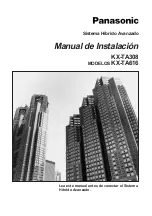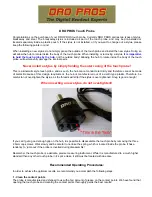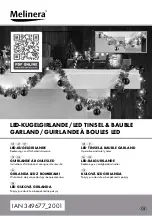
80
Volume per Contact (appears only if the Contact type is selected)
Type the volume of solution that needs to flow through the flow meter before the meter sends a
contact into the text box. The controller uses this information to update the totalizer.
K Factor (appears only if the Paddlewheel type is selected)
Type the K factor (number of pulses per unit volume) of your flow meter into the text box. Consult
the documentation for the flow meter for information on what the K factor will be for your
particular pipe size and installation. The K factor allows the controller to translate pulses from the
meter into gallons or liters. Any value between 0.001 and 20,000 is acceptable.
Total Alarm Limit
Type in the text box the total volume of solution to pass the flow meter before setting off an alarm.
If you do not need an alarm to occur at any given volume, entering 0 will disable the alarm.
Rate High-High Alarm Limit (appears only if the Paddlewheel type is selected)
Type in the text box the process value above which you a want a high-high alarm to occur.
Rate High Alarm Limit (appears only if the Paddlewheel type is selected)
Type in the text box the process value above which you a want a high alarm to occur.
Rate Low Alarm Limit (appears only if the Paddlewheel type is selected)
Type in the text box the process value below which you want a low alarm to occur.
Rate Low-Low Alarm Limit (appears only if the Paddlewheel type is selected)
Type in the text box the process value below which you want a low-low alarm to occur.
Alarm Dead Band (appears only if the Paddlewheel type is selected)
Type in the text box the dead band to be used for each alarm set point.
Damping (appears only if the Paddlewheel type is selected)
Damping is applied to the input by taking a running average of the readings of the input signal
over the time frame specified by the damping setting (0-60 seconds)
.
The averaged reading is
displayed and used for control. Type in the text box the desired time frame.
Backup Sensor Mode (appears only if the Paddlewheel type is selected)
The redundant sensor algorithm will allow the user to define a primary sensor to use for control
and a backup sensor. If the primary sensor goes invalid, the backup sensor will automatically take
over control, and the sensor error alarm will activate. If the sensors don’t match each other within
user-defined limits but both are valid readings, control will stop and a Sensor Deviated alarm will
activate. If the backup sensor goes invalid while the primary sensor is OK, control continues but
the sensor error alarm will activate. If both sensors are invalid, control stops and the sensor error
alarms activate.
To select this sensor as the backup sensor, click the Backup radio button, then click on the Submit
button at the bottom of the page. The page will reload showing the status of the sensor as Backup,
and offer additional menus:
















































